- Clone
- 1412 (See other available formats)
- Regulatory Status
- RUO
- Other Names
- B1, Bp35
- Isotype
- Mouse IgG2a, κ
- Ave. Rating
- Submit a Review
- Product Citations
- publications
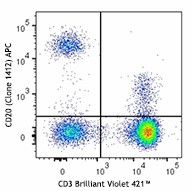
-

Human peripheral blood mononuclear cells were fixed with Fixation Buffer, permeabilized with Permeabilization Wash Buffer, then surface stained with CD3 Brilliant Violet 421™ and intracellularly stained with anti-human CD20 (clone 1412) APC (top) or mouse IgG2a, κ APC isotype control (bottom). -

| Cat # | Size | Price | Quantity Check Availability | Save | ||
|---|---|---|---|---|---|---|
| 340516 | 100 tests | 290€ | ||||
CD20 is a 33-37 kD four transmembrane spanning protein also known as B1 and Bp35. CD20 is expressed on pre-B-cells, resting and activated B cells (not plasma cells), some follicular dendritic cells, and at low levels on a T cell subset. CD20 is heavily phosphorylated in activated B cells and malignant B cells. Homo-oligomeric complexes of CD20 are thought to form Ca2+ conductive ion channels in the plasma membrane of B cells. The CD20 molecule is involved in B-cell activation and is associated with various Src family kinases (Lyn, Lck, Fyn), and exists in a complex with MHC class I and II, CD53, CD81, and CD82. The mAb 1412 recognizes the cytoplasmic domain of the CD20 molecule.
Product DetailsProduct Details
- Verified Reactivity
- Human
- Antibody Type
- Monoclonal
- Host Species
- Mouse
- Formulation
- Phosphate-buffered solution, pH 7.2, containing 0.09% sodium azide and BSA (origin USA)
- Preparation
- The antibody was purified by affinity chromatography and conjugated with APC under optimal conditions.
- Concentration
- Lot-specific (to obtain lot-specific concentration and expiration, please enter the lot number in our Certificate of Analysis online tool.)
- Storage & Handling
- The antibody solution should be stored undiluted between 2°C and 8°C, and protected from prolonged exposure to light. Do not freeze.
- Application
-
ICFC - Quality tested
- Recommended Usage
-
Each lot of this antibody is quality control tested by intracellular immunofluorescent staining with flow cytometric analysis. For flow cytometric staining, the suggested use of this reagent is 5 µl per million cells in 100 µl staining volume or 5 µl per 100 µl of whole blood.
- Excitation Laser
-
Red Laser (633 nm)
- Application Notes
-
Clone 1412 can be used to stain CD20 after the cells have been treated with BioLegend's True-Phos™ Perm Buffer making it ideal for signaling pathway research and simultaneous detection of intracellular targets.
- RRID
-
AB_2632885 (BioLegend Cat. No. 340516)
Antigen Details
- Structure
- Four transmembrane protein (TM4SF), heavily phosphorylated after activation, 33-37 kD
- Distribution
-
B cell, T cell subsets
- Function
- B cell activation
- Ligand/Receptor
- Src family tyrosine kinases, MHC class I, II, CD53, CD81, CD82
- Cell Type
- B cells, T cells
- Biology Area
- Immunology, Costimulatory Molecules
- Molecular Family
- CD Molecules
- Antigen References
-
1. Hultin L, et al. 1993. Cytometry 14:196.
2. Tedder T, et al. 1994. Immunol. Today 15:450. - Gene ID
- 931 View all products for this Gene ID
- UniProt
- View information about CD20 on UniProt.org
Related FAQs
- What is the difference between two anti human CD20 clones 2H7 and 1412?
-
For clone 1412: This clone specifically recognizes cytoplasmic domain of CD20 and thus can only be used for intracellular flow cytometry. In this instance you will need to include the fixation and permeabilization steps. Please follow the intracellular flow cytometry staining protocol.
For clone 2H7: This clone is ok for regular surface staining for CD20 and there is no need for any fixation and permeabilization steps.
Our technical protocols can be found here.
Other Formats
View All CD20 Reagents Request Custom Conjugation| Description | Clone | Applications |
|---|---|---|
| PerCP/Cyanine5.5 anti-human CD20 (cytoplasmic) | 1412 | ICFC |
| PE anti-human CD20 (cytoplasmic) | 1412 | ICFC |
| FITC anti-human CD20 (cytoplasmic) | 1412 | ICFC |
| APC anti-human CD20 (cytoplasmic) | 1412 | ICFC |
| PE/Cyanine7 anti-human CD20 (cytoplasmic) | 1412 | ICFC |
| TotalSeq™-B1125 anti-human CD20 (cytoplasmic) | 1412 | ICPG |
Customers Also Purchased
Compare Data Across All Formats
This data display is provided for general comparisons between formats.
Your actual data may vary due to variations in samples, target cells, instruments and their settings, staining conditions, and other factors.
If you need assistance with selecting the best format contact our expert technical support team.
-
PerCP/Cyanine5.5 anti-human CD20 (cytoplasmic)

Human peripheral blood lymphocytes were stained with CD3 APC... -
PE anti-human CD20 (cytoplasmic)
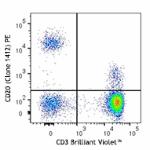
Human peripheral blood mononuclear cells were fixed with Fix... 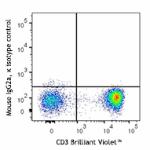
-
FITC anti-human CD20 (cytoplasmic)
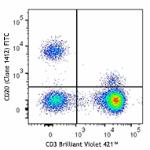
Human peripheral blood mononuclear cells were fixed with Bio... 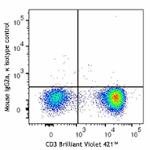
-
APC anti-human CD20 (cytoplasmic)
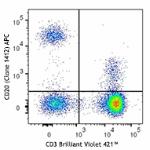
Human peripheral blood mononuclear cells were fixed with Fix... 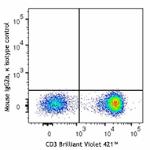
-
PE/Cyanine7 anti-human CD20 (cytoplasmic)

Human peripheral blood mononuclear cells were fixed with Fix... -
TotalSeq™-B1125 anti-human CD20 (cytoplasmic)
 Login / Register
Login / Register 











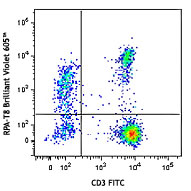
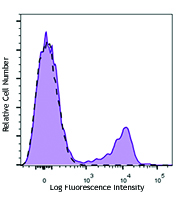
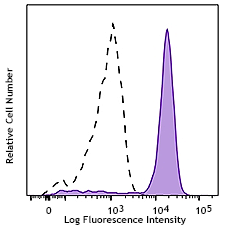



Follow Us